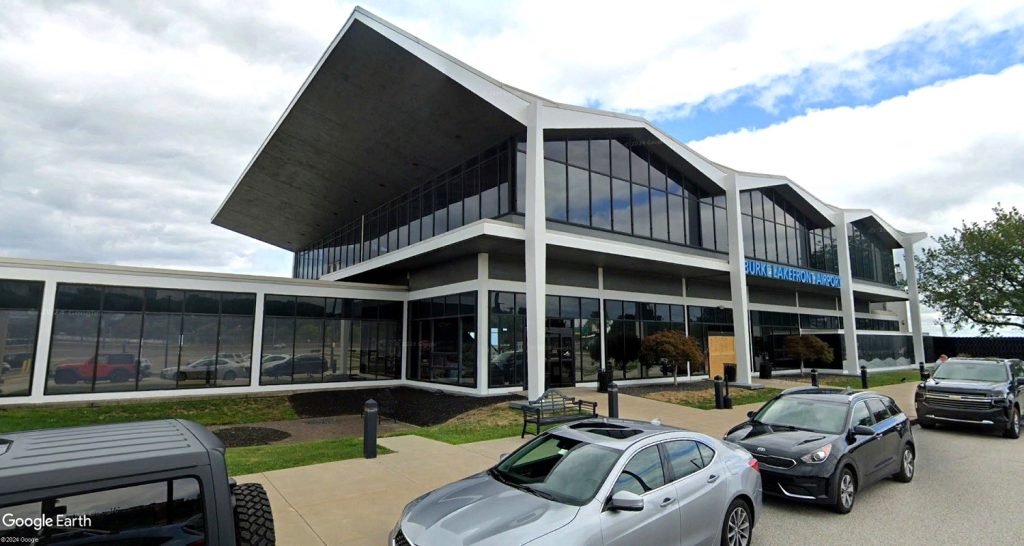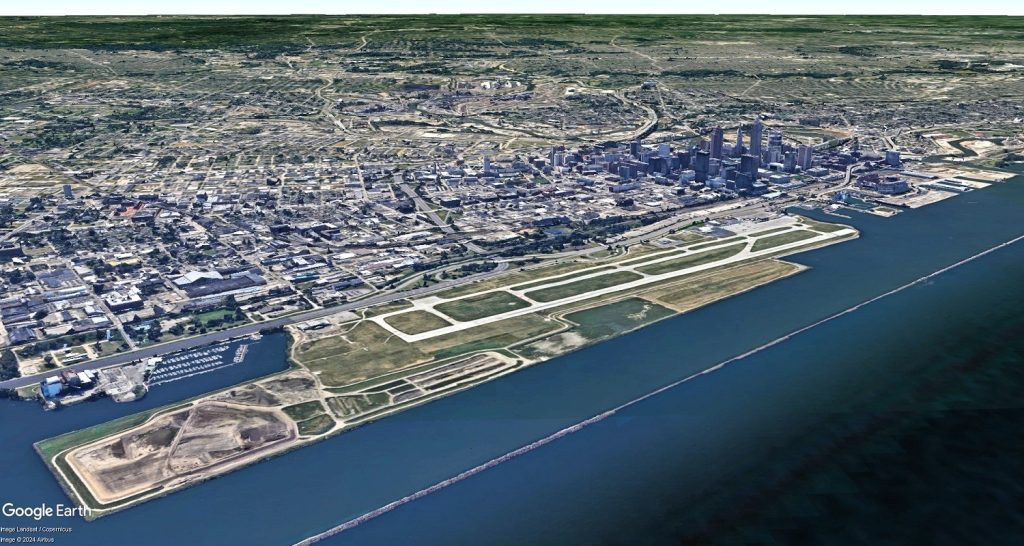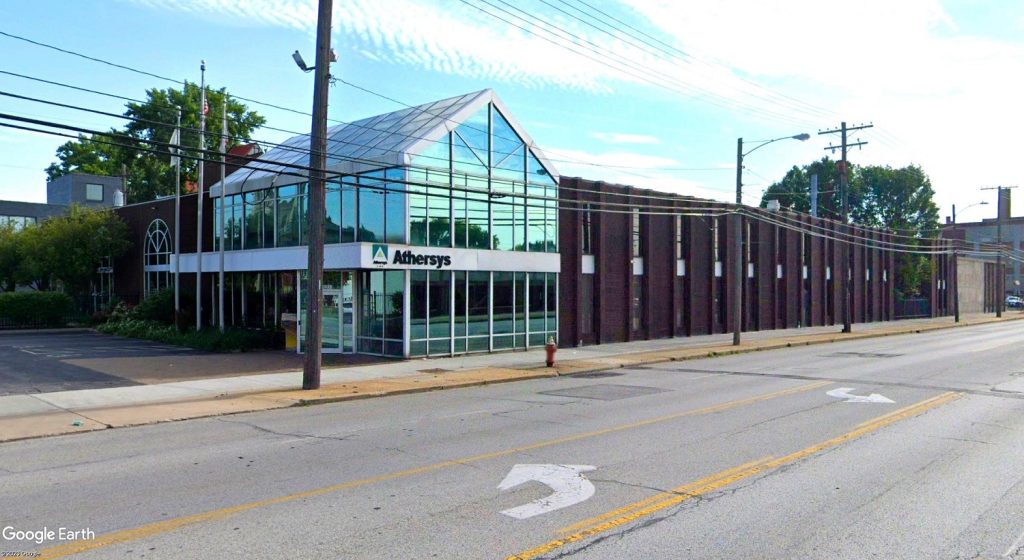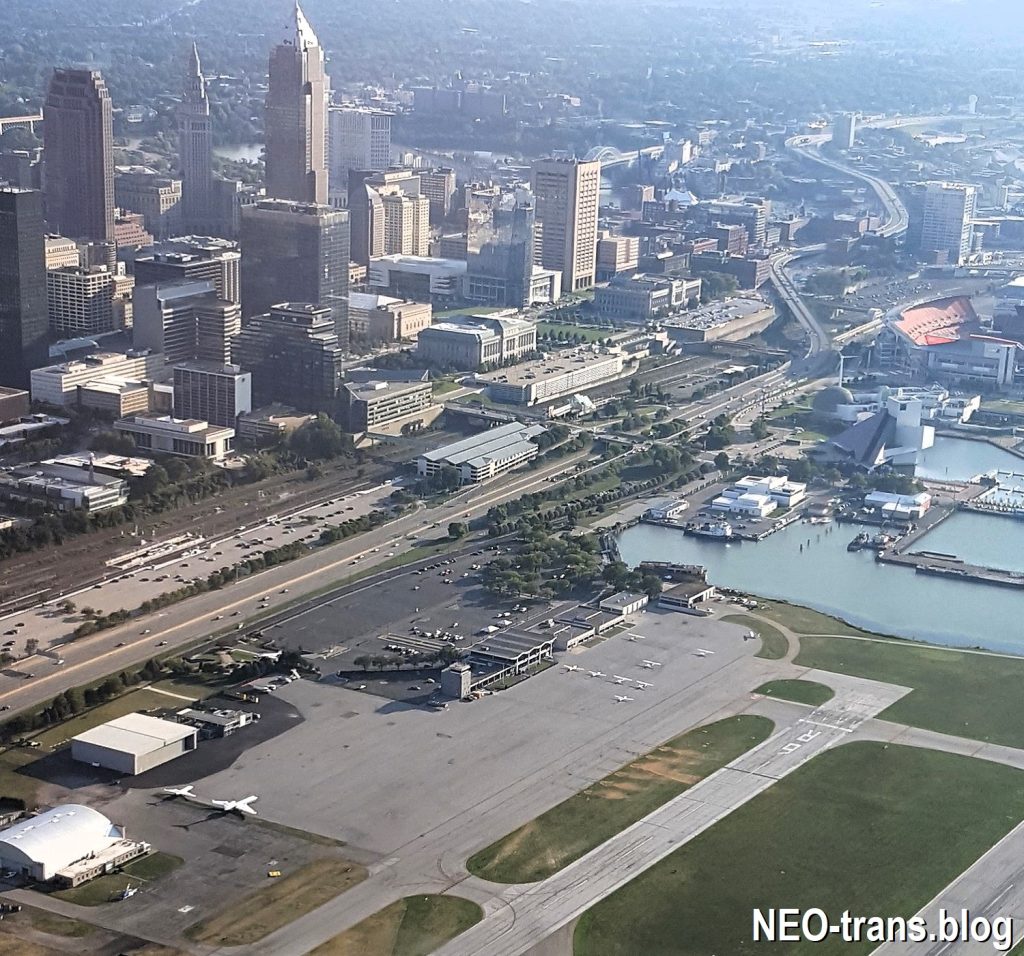
Burke Lakefront Airport’s proximity to Downtown Cleveland is hailed by some and cursed by others. It’s a marketing tool to companies seeking to stay, expand or relocate downtown. Or its 450 acres of underutilized space on a Great Lake could be repurposed with a variety of other uses ranging from recreation to residential (KJP). CLICK IMAGES TO ENLARGE THEM.
Studies: redeveloped Burke more beneficial

Two reports laying out the steps for potentially closing Burke Lakefront Airport in Downtown Cleveland were released today by Cleveland Mayor Justin Bibb’s Administration. While Bibb said the reports show there are more benefits to closing Burke than costs, he and other city officials caution that no decision has been made to close the airport, so no steps have been started in that direction yet.
One report was a procedural analysis of how the airport could be closed, done by CHA Consulting Inc. of Albany, NY. The other was a cost-benefit analysis by Econsult Solutions of Philadelphia of keeping Burke open versus closing it. Both documents reportedly have been circulating among city leaders and others for weeks.
To read the Airport Layout Plan Narrative Report, click here, and to read the Economic and Fiscal Impact Analysis, click here.
In economic benefits, Burke generates $76.6 million per year in direct economic activity to Cleveland. If Burke closed and flight operations were moved to other airports, $67 million of that might remain in Cuyahoga County and $45 million in Cleveland. In other words, Cleveland could lose nearly $32 million in annual economic activity by closing Burke, whose airport code is BKL.
“Approximately one third of the true economic loss of closing BKL is due to the expected cessation of the Cleveland National Air Show, which cannot transfer to any airport in the county in its current form,” said Econsult’s report. “The balance of the economic loss is the result of airport-related activities that may not transfer to other
airports.”
Other users of Burke include corporate travel and charters, flight training, TV station helicopters, organ transplant services, plus emergency helicopter services for Cleveland Clinic and University Hospitals. The Federal Reserve Bank of Cleveland used to be one of Burke’s biggest users to fly checks in and out of there until bank transactions were securely digitized.
Redeveloping Burke with other uses, like mixed-use development, hotels, recreation, and open spaces, could generate up to $92 million per year in new economic activity, the report said.
“The closure of BKL would permit investment that would ultimately have greater economic activity than currently occurring at the airport,” the Econsult report added.
“These studies are crucial in helping us understand the feasibility and potential benefits of transforming Burke Lakefront Airport into a space that better serves our community,” Bibb said in a written statement. “The findings have reinforced my long-held belief that closing Burke is both possible and economically advantageous for Cleveland.”
The procedural analysis suggests there may be three ways to close the airport. One is to let $9.4 million in federal debt for capital improvements to lapse over the long term (12 years). Another is to pay that debt off now and request the Federal Aviation Administration (FAA) close the airport — which is unlikely because the FAA would have to see the closure as “a net benefit to aviation in the region.” Or, Congress could be asked to pass a law that closes Burke.
Despite the release of the cost-benefit study, two city officials told NEOtrans on the condition of anonymity that they are still trying to figure out how much will it might cost to close Burke. That amount goes beyond repaying the federal debt that was used to maintain and update the airport’s infrastructure and safety systems.
While closing Burke would save the city’s Division of Port Control $1.2 million in annual operating losses and costs, it could also cause new costs, too. Demolition costs of Burke’s facilities were estimated by CHA Consulting at $15.3 million. The Division of Port Control oversees Burke and Cleveland Hopkins International Airport.
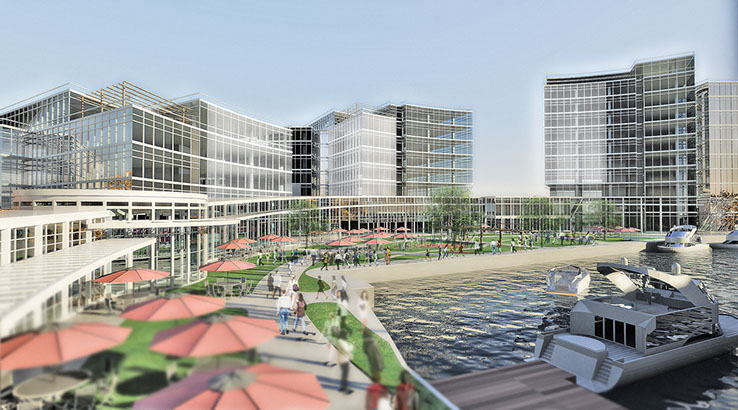
The eastern-most portion of Burke Lakefront Airport and the shoreline where the USS Cod submarine is docked was proposed a decade ago to be developed with residential, offices and a hotel. Difficulty in finding a new site for the submarine and federal airport clearance regulations doomed the plan (Geis).
Cleveland-area airports are underutilized, having seen their annual flight operations drop significantly over the last two decades, according to AirNav.com. Burke had more than 100,000 flight operations in 2000 compared to just 53,000 in 2022. Hopkins’ use fell from 332,000 flight operations in 2000 to 91,000 in 2021. Use of Cuyahoga County Airport in Richmond Heights fell from 69,540 flight operations in 2003 to just under 23,000 in 2022.
The FAA has not yet weighed in on Burke’s potential closure, the two city officials told NEOtrans. Unknown capital construction costs may be necessary to transfer Burke’s eligibility for FAA “reliever” designation to another airport, those officials said. Burke is an FAA-designated reliever to Hopkins Airport — all major commercial airports like Hopkins must have an FAA Reliever facility for general aviation and potential emergencies.
Burke has a bigger terminal, longer and wider runways plus more tarmac space than any other airport in Greater Cleveland except for Hopkins. Officials caution that it is unlikely the FAA would authorize the transfer of Burke’s reliever status to another location with lesser facilities, like Cuyahoga County Airport which is often mentioned as an alternative to Burke. Those costs were not covered in the reports released today.
CHA Consulting said major tenants at Burke like Signature Aviation, a fixed-base operator for executives and Aitheras’ organ transplant shipments would have to find new hangars and support facilities at other airports.
Not only would the city have to buy out their leases, but Signature in 2016 spent $16.5 million to build a 6,000-square-foot executive terminal, a 20,000-square-foot hangar, and a new fuel farm. Other parts of the study detailing cost impacts were redacted, citing trade secrets and attorney work products.
City officials also said that no geotechnical analyses have been done of Burke’s soil. Burke was built in the 1940s on a former landfill, including some buried hazardous materials. The eastern portion of Burke was created by depositing silt dredged from the bottom of the navigable portion of the Cuyahoga River as well as from Lake Erie’s Cleveland harbor. Airport operations cover 245 acres but the site measures more than 450 acres when the silt deposits, called confined disposal facilities, are counted.
“For decades, elected officials, businesses, and our residents have shared ideas about the best use of Burke, the property on which it sits, and our lakefront,” said City Council President Blaine Griffin.
“The release of this report will allow us to connect quantitative research with the many thoughts and opinions shared over the years,” he added. “Council will thoroughly review this report, rely on the feedback of our constituents, and work with our partners in the administration and the federal level to determine the appropriate next steps.”
Ward 3 Councilman and Chair of the Transportation and Mobility Committee Kerry McCormack has been supportive of closing Burke for years. These two reports only strengthened his support, he said.
“As a longtime advocate for public access to our waterfronts, I applaud Mayor Bibb for commissioning detailed and thoughtful studies on the future of Burke Lakefront Airport,” McCormack said. “While there is no doubt that much due diligence will be needed, I believe our residents deserve meaningful access to high quality public space on our lakeshore, including the land where Burke Lakefront Airport sits. Connecting all of our people to our most precious resources will always be the right thing to do.”
END


